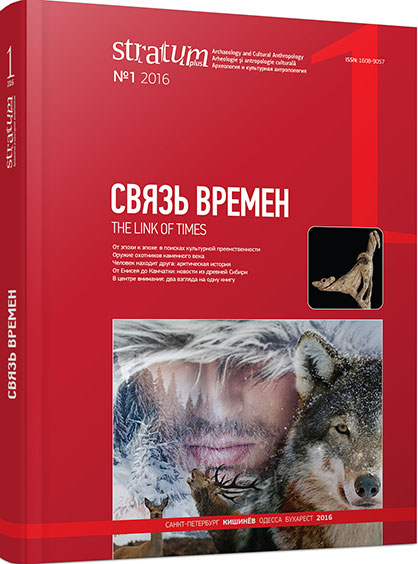Костные остатки раннеголоценовых домашних собак из Жоховской стоянки (восточная Сибирская Арктика) и проблема достоверности идентификации древних Canis familiaris из археологических раскопок
Early Holocene Dog Bones from the Zhokhov Site (East Siberian Arctic) and the Question of the Reliability of Identification of Early Canis familiaris from Archaeological Excavations
Author(s): Vladimir V. Pitulko, Alexei K. KasparovSubject(s): History, Anthropology, Archaeology, Cultural history, Cultural Anthropology / Ethnology
Published by: Издательский дом Stratum, Университет «Высшая антропологическая школа»
Keywords: Siberian Arctic; Early Holocene; Zhokhov site; fossil dogs; domestication
Summary/Abstract: Excavations of the Zhokhov site yielded small, but significant collection of canid bone remains (MNI=13) dating from the early Holocene. To clarify the characteristics of their cranial morphology we compared them with recent wolf skulls from the eastern Siberia. We conclude that the canid remains from the Zhokhov site belong to a well-shaped breed of Canis familiaris that existed in Arctic Siberia ca. 8000 14 С bp and was widely used by people as hunting and draught dogs. Presence of dog teams in the culture of Zhokhov hunters is a firmly established fact. The morphological study of fossil dog remains from the Zhokhov site shows that there is a reliable and universal criterion to distinguish between wolf and primitive (wolf-like) dogs. The difference is easy to find through comparison of two proportional indices of the dog/wolf skull. The first of these indices is a ratio between the skull height at postorbital constriction and the basal length of the skull, and the second is a ratio between the snout height at Рm1—Рm2 and the basal skull length. It can be hypothesized that dog teams might have been used in Siberia as early as 15,000 years ago. The evolution of Canis familiaris seems to have included the following stages: 1) natural selection through feeding behavior in a specific ecological niche formed as a result of human activity; 2) artificial selection for domesticability (tolerance to human beings, etc.); 3) controlled selection aimed at shaping the breeds possessing diverse qualities answering specific cultural and economic needs and functions.
Journal: Stratum plus. Археология и культурная антропология
- Issue Year: 2016
- Issue No: 1
- Page Range: 171-207
- Page Count: 37
- Language: Russian
- Content File-PDF

